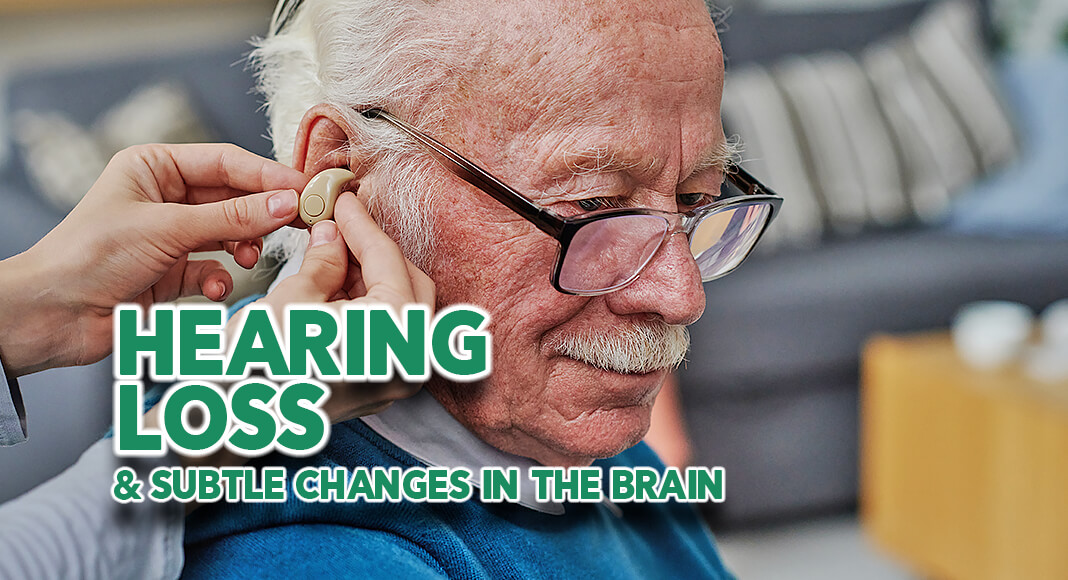
Mega Doctor News
by University of California San Diego
Newswise — Hearing loss affects more than 60 percent of adults aged 70 and older in the United States and is known to be related to an increased risk of dementia. The reason for this association is not fully understood.
To better understand the connection, a team of University of California San Diego and Kaiser Permanente Washington Health Research Institute researchers employed hearing tests and magnetic resonance imaging (MRI) to determine whether hearing impairment is associated with differences in specific brain regions.
In the November 21, 2023 issue of the Journal of Alzheimer’s Disease, researchers reported that individuals enrolled in this observational study who had hearing impairment exhibited microstructural differences in the auditory areas of the temporal lobe and in areas of the frontal cortex involved with speech and language processing, as well as areas involved with executive function.
“These results suggest that hearing impairment may lead to changes in brain areas related to processing of sounds, as well as in areas of the brain that are related to attention. The extra effort involved with trying to understand sounds may produce changes in the brain that lead to increased risk of dementia,” said principal investigator Linda K. McEvoy, Ph.D., UC San Diego Herbert Wertheim School of Public Health and Human Longevity Science professor emeritus and senior investigator at the Kaiser Permanente Washington Health Research Institute.
“If so, interventions that help reduce the cognitive effort required to understand speech — such as the use of subtitles on television and movies, live captioning or speech-to-text apps, hearing aids, and visiting with people in quiet environments instead of noisy spaces — could be important for protecting the brain and reduce the risk of dementia.”
McEvoy designed and led the study while at UC San Diego, in collaboration with Reas and UC San Diego School of Medicine investigators who gathered data from the Rancho Bernardo Study of Health Aging, a longitudinal cohort study of residents of the Rancho Bernardo suburb in San Diego that launched in 1972. For this analysis, 130 study participants underwent hearing threshold tests in research clinic visits between 2003 and 2005 and subsequently had MRI scans between 2014 and 2016.
The results of the study show that hearing impairment is associated with regionally specific brain changes that may occur due to sensory deprivation and to the increased effort required to understand auditory processing stimulations.
“The findings emphasize the importance of protecting one’s hearing by avoiding prolonged exposure to loud sounds, wearing hearing protection when using loud tools and reducing the use of ototoxic medications,” said co-author Emilie T. Reas, Ph.D., assistant professor at the UC San Diego School of Medicine.
Co-authors include: Jaclyn Bergstrom, Donald J. Hagler Jr, David Wing, and Emilie T. Reas, all of UC San Diego.
This research was funded, in part, by the National Institute on Aging (R00AG057797, R01AG077202, R01AA021187) and the American Federation for Aging Research/McKnight Foundation (311122-00001). Data collection for the Rancho Bernardo Study of Healthy Aging was provided primarily by the National Institutes of Health (HV012160, AA021187, AG028507, AG007181, DK31801, HL034591, HS06726, HL089622). Archiving and sharing of Rancho Bernardo study data was supported by the National Institute on Aging (AG054067). Data is available through the study website at: knit.ucsd.edu/ranchobernardostudy/.
Disclosures: Donald J. Hagler Jr is listed as an inventor on US Patent 9,568,580, 2017, “Identifying white matter fiber tracts using magnetic resonance imaging (MRI).” Other authors report no conflicts of interest.
DOI: 10.3233/JAD-230767










